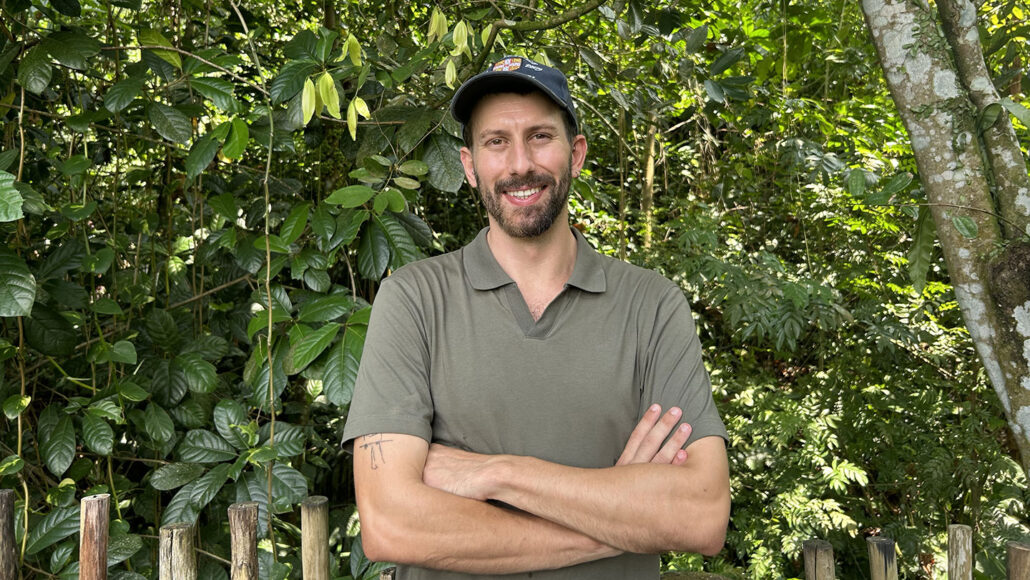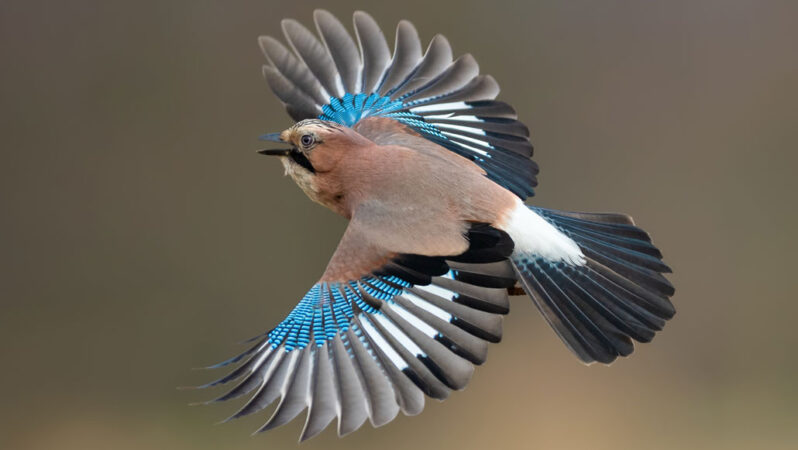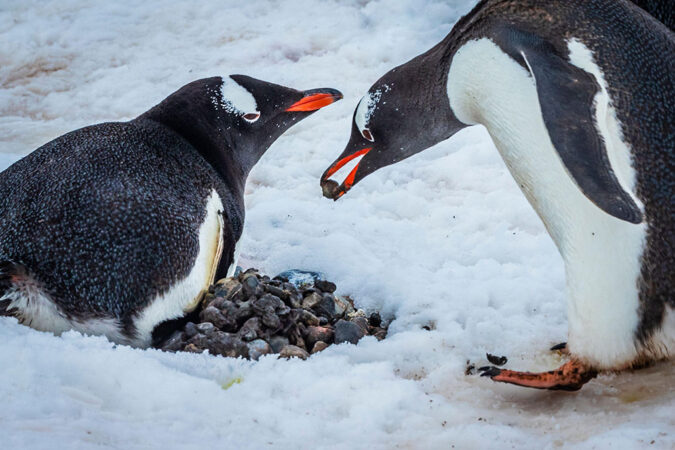Magic helped this researcher trick birds for research
Elias Garcia-Pelegrin investigates how animals perceive their world

In high school, Elias Garcia-Pelegrin learned coin tricks to improve his focus. He now performs magic for animals to understand how they see the world.
E. GARCIA-PELEGRIN
Elias Garcia-Pelegrin was looking for a quick magic trick that would capture the attention of people, not birds. He performed magic to help pay for university. And his “fast pass” fit the bill. But he soon realized that this trick could serve another use: in a study of Eurasian jays.
Eurasian jays are clever birds that perform their own tricks when caching, or storing, food for later. To fool thieves, the birds first hold their treat in their bill. They then pretend to store the morsel by slipping it into their throat pouches. These antics resemble a magician’s hand tricks, which fool onlookers into believing an object has moved. He wondered how well these feathered magicians would fare against human magic.
In their 2021 study, Garcia-Pelegrin and his team performed three types of hand tricks for humans and jays. While the humans were fooled by all three, the Eurasian jays only fell for one: the fast pass. He suspects it’s because, unlike us, the birds don’t have expectations about how hands move.
At the National University of Singapore, Garcia-Pelegrin is now studying intelligence in hornbills. These dazzling birds rival the smarts of corvids (ravens, jays and their relatives) and parrots in some ways, he says. In this interview, Garcia-Pelegrin shares his experiences and advice with Science News Explores. (This interview has been edited for content and readability.)

What inspired you to pursue your career?
I used to work at the Sea Life London aquarium in England. One of my jobs was taking care of the gentoo penguins. They perform this beautiful spectacle every single year. When they are courting, the male takes a pebble to the female and bows to her. If she approves, she’ll bow back. They create this dance together through bowing.
As someone who studied human evolution and the mind, it got me thinking. What’s the male considering when he chooses a pebble? What’s the female thinking when she receives the pebble and bow? I understood the biology behind it, but I was more interested in the possible psychological pressures. I started reading about bird intelligence.
This was a completely alien world to me. It’s not something that they teach you in psychology courses. I just found it so fascinating that until 20 years ago, the phrase “bird brain” meant someone was stupid. That all changed when we started testing more animals. The more birds we tested, the more we realized this was not the case. I started thinking about it nonstop.

When did you start studying bird intelligence?
It all started when I worked with the ravens that live in the Tower of London. I met the researcher behind that project, Nathan Emery from the Queen Mary University of London. He offered to show me the ravens and let me pitch a research idea. I ended up working with him and a young raven named Poppy. I investigated whether she could learn from my movements.
My experiment used a clear box that held a piece of chicken. To open the box, Poppy had to pull a string. I glued a light switch next to the string that didn’t power anything. Instead, it helped me see if Poppy would copy me. Every time I demonstrated how to open the box for her, I pressed the light switch first. I then left to see what she did. I found that Poppy would imitate me by also touching the button and pulling the string.
How did you get into magic?
I didn’t plan on magic being a part of my science. I started learning coin tricks in high school. I was quite the fidgety kid in class and was diagnosed with hyperactivity. My dad was a medical doctor and taught me coin tricks to help me keep still in class. I became good enough to earn money by performing for others. I even took a gig on a cruise ship that helped fund my studies.
What was a big challenge for you?
My biggest challenge was having confidence that the world would find my work just as interesting as I did. I was very afraid of what my colleagues would think. I worried that the scientific community would see my research as a gimmick.
Luckily, that was not the case. Most of my colleagues have been very supportive and find it interesting. The Science of Magic Association was also very interested in our work. They’re a group of researchers who look into the science behind how people perceive magic.
What piece of advice do you wish you had been given when you were younger?
I was very bad at school. I had a short attention span, and it was difficult for me to concentrate. I had to repeat a course and didn’t get into the University of Cambridge in England when I first applied. I learned that who you are right now doesn’t determine who you will be as an adult. If you’re passionate about something, then things will align. If you’re not finding your place right now, you’ll find that in the future for sure.
I think all that matters is that you find something worth doing. If you’re passionate about something, just do it. Do it until you lose that passion for it. And don’t let it go, regardless of what people may tell you. It’s very hard to find something that you are extremely passionate about. It’s a privilege to find something that you love.







